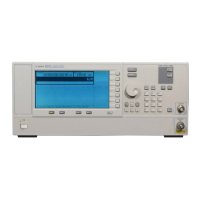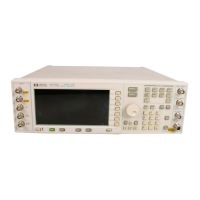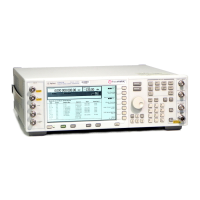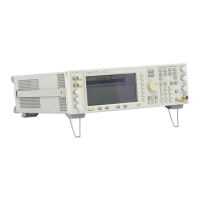Optimizing Performance
Creating and Applying User Flatness Correction
Chapter 3 59
Creating and Applying User Flatness Correction
User flatness correction allows the digital adjustment of RF output amplitude for up to 1601
frequency points in any frequency or sweep mode. Using an Agilent E4416A/17A or
E4418B/19B power meter (controlled by the signal generator through GPIB) to calibrate the
measurement system, a table of power level corrections is created for frequencies where power
level variations or losses occur. These frequencies may be defined in sequential linear steps or
arbitrarily spaced.
If you do not have an Agilent E4416A/17A or E4418B/19B power meter, or if your power
meter does not have a GPIB interface, the correction values can be manually entered into the
signal generator.
To allow different correction arrays for different test setups or different frequency ranges, you
may save individual user flatness correction tables to the signal generator’s memory catalog
and recall them on demand.
Follow the steps in the next sections to create and apply user flatness correction to the signal
generator’s RF output.
Afterward, follow the steps in “Recalling and Applying a User Flatness Correction Array” on
page 64 to recall a user flatness file from the memory catalog and apply it to the signal
generator’s RF output.
Creating a User Flatness Correction Array
In this example, you will create a user flatness correction array. The flatness correction array
contains ten frequency correction pairs (amplitude correction values for specified frequencies),
from 1 to 10 GHz in 1 GHz intervals.
An Agilent E4416A/17A/18B/19B power meter (controlled by the signal generator via GPIB)
and E4413A power sensor are used to measure the RF output amplitude at the specified
correction frequencies and transfer the results to the signal generator. The signal generator
reads the power level data from the power meter, calculates the correction values, and stores
the correction pairs in the user flatness correction array.
If you do not have the required Agilent power meter, or if your power meter does not have a
GPIB interface, you can enter correction values manually.

